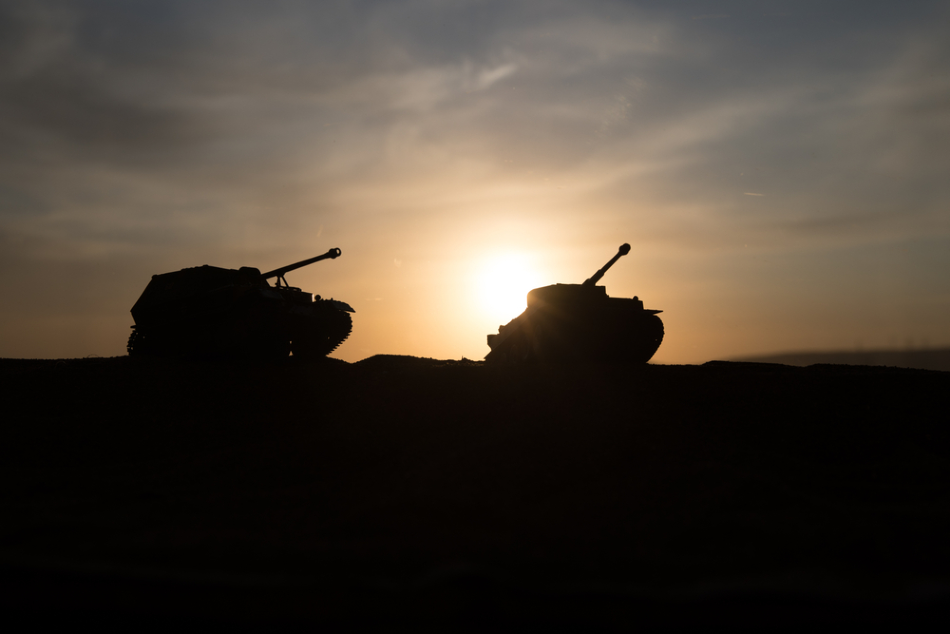
Image Credit: zef art/Shutterstock.com
Manufacturing small metal vehicle parts via 3D printing could revolutionize army logistics. Instead of leaving a ground vehicle such as a tank inactive for weeks (if not months), replacing parts with a 3D-printed version can return the vehicle to duty in a matter of hours.
What is 3D Printing?
Three-dimensional (3D) printing involves creating an object from a computer-aided design model by fusing a material, such as metal or plastic, layer by layer. The technique is precise and repeatable, and the resulting object is often lighter in weight than traditionally manufactured parts.
Many industries have already benefited from 3D printing, including aviation, where many aircraft now feature 3D-printed parts throughout their airframes. Several air forces have followed suit, and army counterparts are now doing the same for their combat vehicles.
3D Printing Use in the Army
The US Combat Capabilities Development Command (CCDC) of the Army Research Lab (ARL) have recently utilized a customized steel alloy powder to produce high-strength metal 3D parts, which serve as spares for ground vehicles.
AF96 is a low alloy, high-strength performance steel developed by the Air Force. It exhibits high impact toughness and shock survival, and is resistant to bending and abrasive material losses such as high-performance penetrating weapons. For this reason, the material is known as bunker buster.
AF96 powder is used in Laser Powder Bed Fusion (LPBF), which employs a laser to melt and fuse the 3D printed materials. The result is vehicular components, which are reportedly 50% stronger than commercial equivalents. This can have massive effects on the sustainability and effectiveness of army logistics chains.
Many parts in a ground vehicle are made of steel and easily replaced with metal 3D printed parts, which can exhibit better material properties than original parts.
Watch the video below to find out more about how armies have used 3D printing to repair military vehicles.
Printing for the Future | 3D Printing
Video Credit: Marines/YouTube.com
Cooling M1 Abrams Tanks
AF96 has exhibited proof-of-concept when utilized to print impeller fans used to cool the fan motor in the engine of an M1 Abrams tank, a third-generation American battle tank designed by Chrysler Defense (now General Dynamic Land Systems). The fan allows the air to flow evenly and control the temperature of the vehicle.
Whether such parts perform as well as - or better than - an original equipment manufacturer (OEM) part still needs to be determined.
Taking the Strain off the Logistics Chain
By 3D printing metal parts remotely, the CCDC aims to reduce the strain on the army logistics chain. Instead of requesting a replacement part from thousands of miles away, troops could print it and recommission a vehicle much faster and at a fraction of the cost. Rather than carrying truckloads of spare parts, including convoy loads, all a unit would need is a 3D printer and raw materials.
The US Army is following in the footsteps of the French Army, which already uses Formlabs and Ultimaker 3D printers to produce spare parts such as protective shells, seals and optics parts. In doing so, they are accelerating the supply chain and reducing transportation costs.
3D printing offers a solution to spare part production and easing logistics, while the process also allows for rapid prototyping and manufacturing of end-use functional parts. It makes the best use of the materials available through recycling programs, some of which are already in operation in US military bases.
3D printing can also help increase the operational lifetime of legacy equipment by shortening the supply chain back to the manufacturer, which may not have spare parts anymore. These parts may weigh less thanks to composite materials and decrease the weight of weapon systems, meaning the unit as a whole is lighter and can move faster.
The Future of 3D Printing in the Army
The CCDC and academic researchers are working on nickel-titanium alloys that model AF96 and other alloys to produce high-performance materials that will be stronger and more heat-resistant.
The ARL had funded two 3D metal printing projects at the University of Texas at El Paso (UTEP). The first will use infrared cameras to develop an intelligent system to monitor and auto-correct powder bed fusion based processes to avoid defects and make real-time corrections.
The second seeks to enhance the mechanical properties of metal parts through nitride coatings; the nitriding process would occur during the print job to tailor the microstructure of the part for optimum use.
There are many benefits to utilizing 3D printing to produce metal parts to be used in the army’s ground vehicles. The ability to print on-demand means fewer spare parts need to be transported, lessening the load on logistics chains, reducing costs and allowing units to move more quickly.
References and Further Reading
Vialva T. (2019) U.S. Army develop ultra-strong 3d printed steel parts to revolutionize battlefield logistics, 3D Printing Industry (online) https://3dprintingindustry.com/news/u-s-army-develop-ultra-strong-3d-printed-steel-parts-to-revolutionize-battlefield-logistics-150367/ (accessed 11th April 2020)
AF96 Low alloy high performance steel, Federal Laboratory Consortium for Technology Transfer (online) https://federallabs.org/successes/awards/awards-gallery/2018/af96-low-alloy-high-performance-steel (accessed 11th April 2020)
Jackson B. (2018) Real-Time Metal 3d Printer Monitoring At El Paso Awarded In $900k ARL Grant, 3D Printing Industry (online) https://3dprintingindustry.com/news/real-time-metal-3d-printer-monitoring-el-paso-awarded-900k-arl-grant-129057/ (accessed 11th April 2020)
Ahmed R. (2019) French Army 3D Print Spare Parts at Remote Bases, 3DPrinting.com https://3dprinting.com/news/french-army-3d-print-spare-parts-at-remote-bases/ (accessed 11th April 2020)
Rempfer K. (2019) Army announces new push to get 3D printing, advanced manufacturing to troops in the field, Army Times (online) https://www.armytimes.com/news/your-army/2019/10/04/army-announces-new-push-to-get-3d-printing-advanced-manufacturing-to-troops-in-the-field/ (accessed 11th April 2020)
Disclaimer: The views expressed here are those of the author expressed in their private capacity and do not necessarily represent the views of AZoM.com Limited T/A AZoNetwork the owner and operator of this website. This disclaimer forms part of the Terms and conditions of use of this website.